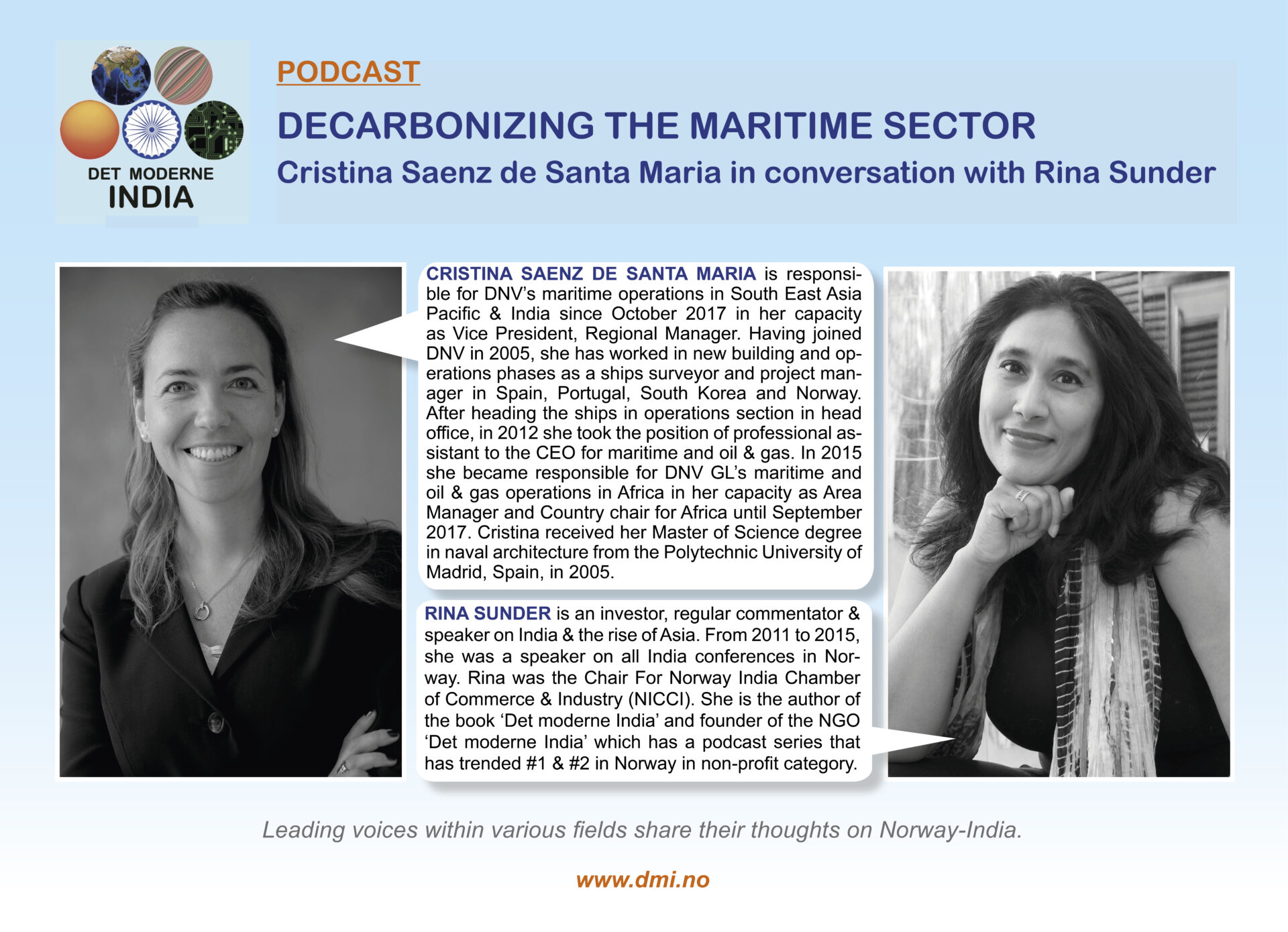
Norway and India share a long maritime history, and maritime issues are central to the bilateral dialogue between our two countries. Our guest for this episode is Cristina Saenz de Santa Maria. Cristina is responsible for DNV’s maritime operations in South East Asia Pacific & India since October 2017 in her capacity as Vice President, Regional Manager.
Want to know what we address in this episode?
A significant channel to start reducing carbon emissions is by using coastal shipping. Coastal shipping is widely acknowledged as a viable and effective substitute for road transportation.
India can look to the unique Norwegian shipping ecosystem for inspiration. Norway is at the forefront of developing and using technology and concepts that help to reduce emissions and improve the environment. Norway becoming one of the most advanced maritime nations in the world today.
We asked her the following:
- New fuels, increased energy efficiency, and better logistics will be necessary to decarbonize shipping. What are the green alternatives for coastal shipping?
- Maritime transportation is the cornerstone of global trade; 90% of international goods are carried by sea. However, the shipping industry accounts for about 3% of global greenhouse gas emissions. In this green transition, how dependent are you / companies on the governments?
-The primary source of emissions from the transportation industry is the burning of fossil fuels. What is the most promising measures to assist the decarbonization of shipping today?
- During the seminar in India you mentioned Northern xplorer? Please tell more
- Norwegian authorities have set ambitious goals. The authorities aim to reduce GHG emissions by 50% by 2030 for domestic shipping and fishing. To reach the goal, Norway must have approximately 700 low-emission ships and 400 zero-emission ships in 2030, distributed over all ship categories. 78 fully zero emission vessels are being made in Cochin. Why is this project unique?
- India has a long and contiguous coastline spanning 7,517 km, served by 12 major ports and 212 notified minor/ intermediates ports. Currently, coastal and inland waterways con- tribute ~6% of the country’s freight modal mix. There is an excellent opportunity to tap an environmentally friendly water-based modal transport, which can complement rail and road-based cargo movement. What can Norwegian companies add to the Indian maritime sector?
- What are your key recommendations to fast track the green transition in domestic shipping in india?
Listen to the podcast here: